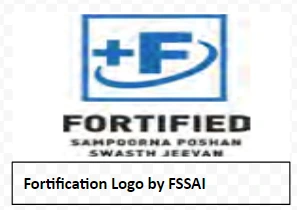![]() 20 Dec 2023
20 Dec 2023
Crops are of paramount importance for food production, serving as the primary source of sustenance for humanity. They provide essential nutrients in food, including carbohydrates, proteins, and vital vitamins, in our daily diets. Effective crop management is central to addressing global food security and ensuring a stable supply of nourishing food.
| Vitamins and Minerals | Functions | Sources |
| Vitamin A | Keeps our skin and eyes healthy. | Papaya, Mango, Carrot |
| Vitamin B Complex | Gives strong muscles. | Rice, wheat, liver |
| Vitamin C | Helps in the fight against diseases. | Orange, Guava, Tomato, lemon, Amla, Green Chilli |
| Vitamin D | Keeps our bones and teeth strong. | Sunlight, milk, Butter, Fish, Egg, Liver |
| Vitamin E | It is antioxidant, it slows down the process that damages the cell. It also helps to the proper function of many cells. | Vegetable oils, cereals, meat, egg, vegetable |
| Vitamin K | Helps in the blood clot, preventing excess bleeding. | Leafy greens, meat, egg |
| Iodine | Iodine is needed to make thyroid hormones and these hormones control the body’s metabolism. | Fish, milk, vegetables |
| Calcium | Builds and Keeps bones healthy. | Milk, egg |
| Iron | Iron is part of Haemoglobin and many proteins. | Apple, chocolate, leafy vegetables. |
| Phosphorous | Phosphorus works with calcium to build the bones. | Fish Milk, green chilli |
| Dietary fibres or Roughage | Not a nutrient but helps in the size of stool and softness. It also helps to decrease the cholesterol level. | Whole grain, pulse, fresh fruits, potato |
| Water | Helps to throw out waste via urine and sweat and helps our body to absorb nutrients from food. | Drinking water, milk, tea, fruits and vegetables |
Requirement: For the growth and maintenance of good health, our diet should have all the nutrients that our body needs, in the right quantity, not too much of one nor too little of other.
Balance diet= Roughage + water + right quantities of all nutrients
Excess Fat: Too much fat leads to obesity.
Nutrient Deficiency: Diseases that occur due to lack of nutrients over a long period are called deficiency disease.
Example: Lack of protein leads to Stunted growth, swelling face, discoloration of hairs, skin disease, etc.
Prolonged Deficiency: If an individual experiences a prolonged lack of both carbohydrates and proteins in their diet, it can lead to a complete halt in growth.
Results: This can result in significant emaciation, extreme thinness, and such a severe weakness that mobility may be greatly impaired.
| Vitamins and Minerals | Deficiency Disease | Symptoms |
| Vitamin A: | Loss of Vision | Poor vision, loss of vision in dark night |
| Vitamin B1: | Beriberi | Weak muscles and little energy to do work. |
| Vitamin C: | Scurvy | Bleeding gums, wounds take longer time to heal |
| Vitamin D: | Rickets | Bones become soft & bent |
| Calcium: | Bones and teeth decay | Weak bones and tooth decay |
| Iodine: | Goitre | Glant in the neck, mental disability in children |
| Iron: | Anaemia | Weakness |
Required Fortification: Fortification of food is the addition of key vitamins and minerals to staple foods such as rice, wheat, oil, milk and salt to improve their nutritional content.
There is a logo for the fortified items as per the standards of FSSAI.

<div class="new-fform">
</div>
